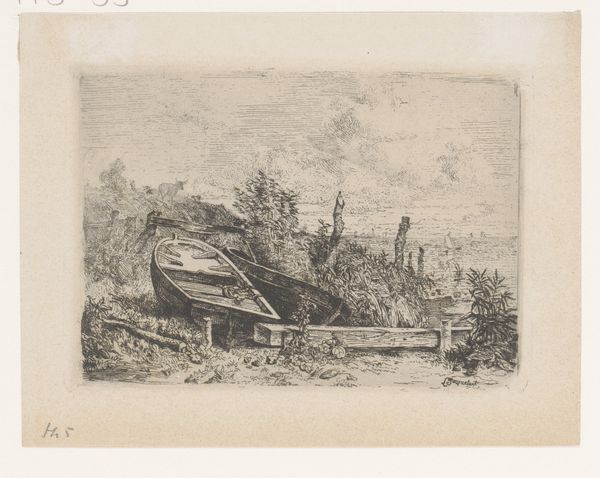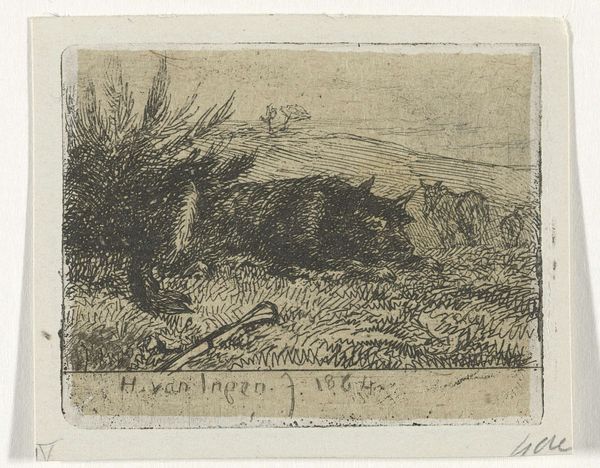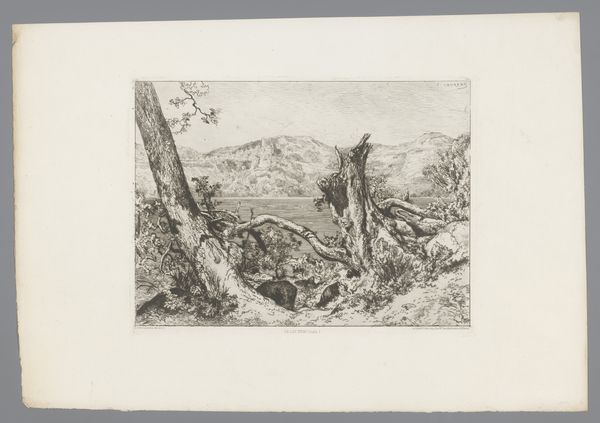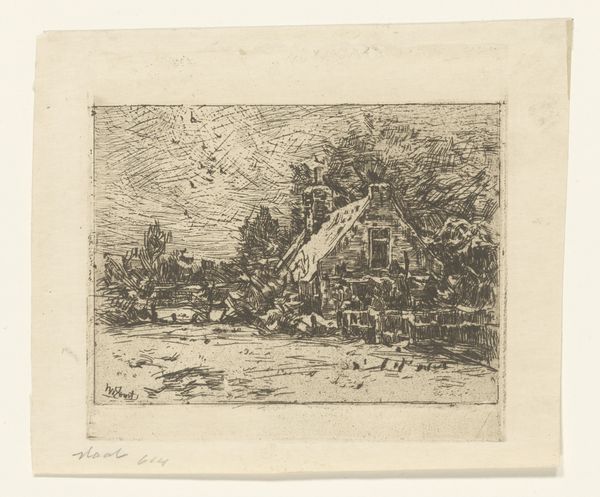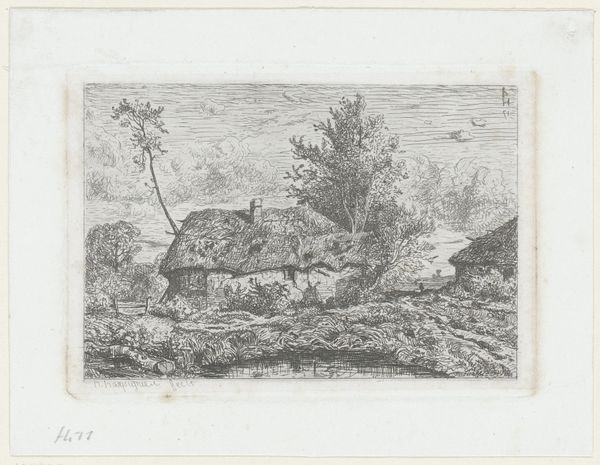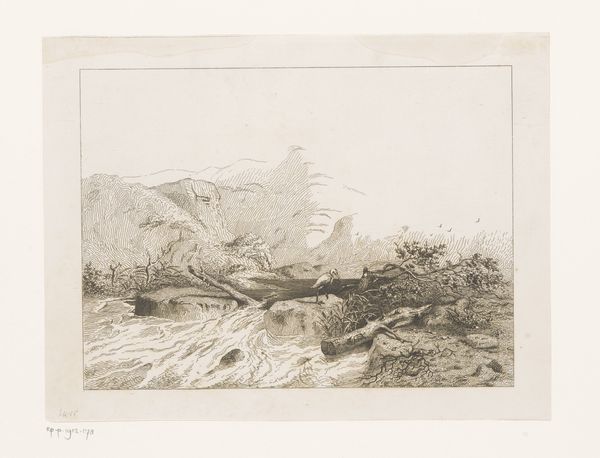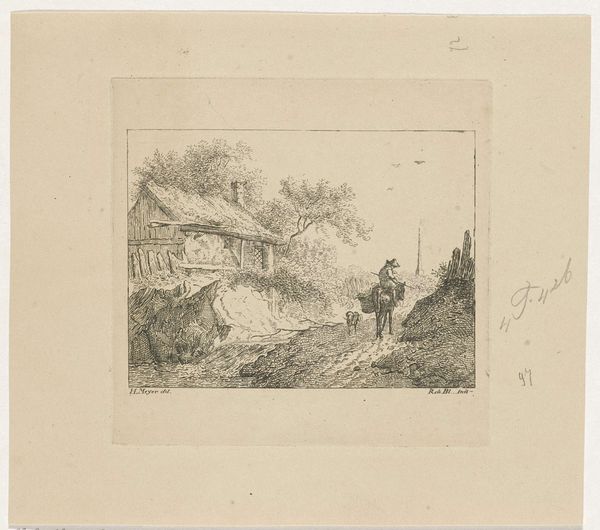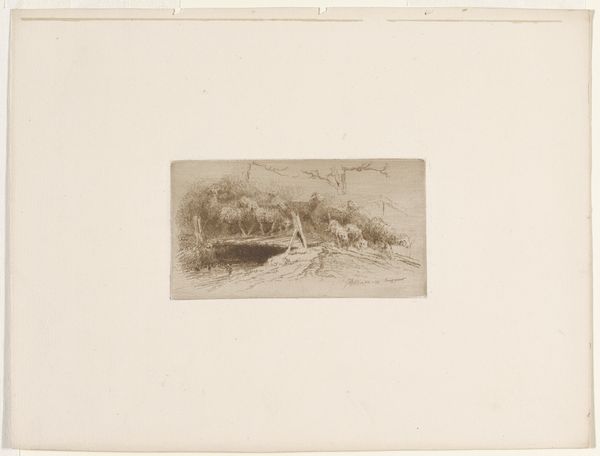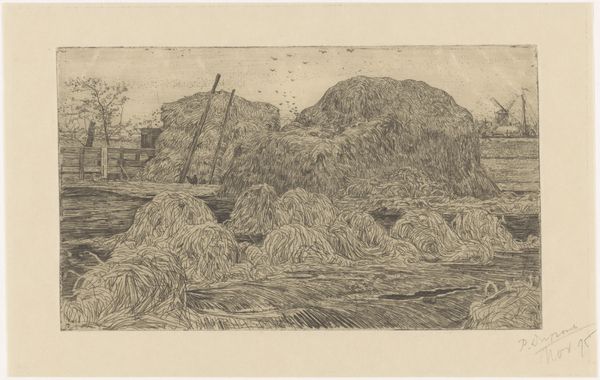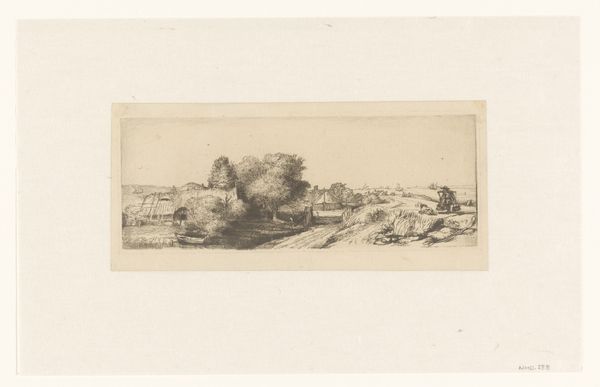
Roeiboot op zijn kop op de wal met daarachter een zeilboot met gehesen zeilen 1830 - 1910
0:00
0:00
drawing, print, etching
#
drawing
# print
#
etching
#
landscape
#
etching
#
monochrome
Dimensions: height 97 mm, width 136 mm
Copyright: Rijks Museum: Open Domain
Lambert Jacquelart made this print of boats around the mid-19th century using etching. Etching is a printmaking technique, and as you can see in the image, it creates a wealth of fine lines. The process involves coating a metal plate with a waxy, protective layer, then drawing through this layer with a sharp needle to expose the metal. The plate is then immersed in acid, which bites into the exposed lines, creating grooves. Ink is applied to the plate, filling these grooves, and the surface is wiped clean. Finally, paper is pressed onto the plate, transferring the ink and creating the print. Considered this way, Jacquelart’s print speaks to the labor of leisure, of enjoying the fruits of the sea. It is also a testament to skilled craft. And although printmaking has become highly industrialized, at its core, it is about the translation of hand skills into a repeatable image. Jacquelart's print reminds us that even in a world of mechanical reproduction, the touch of the artist remains essential.
Comments
No comments
Be the first to comment and join the conversation on the ultimate creative platform.

